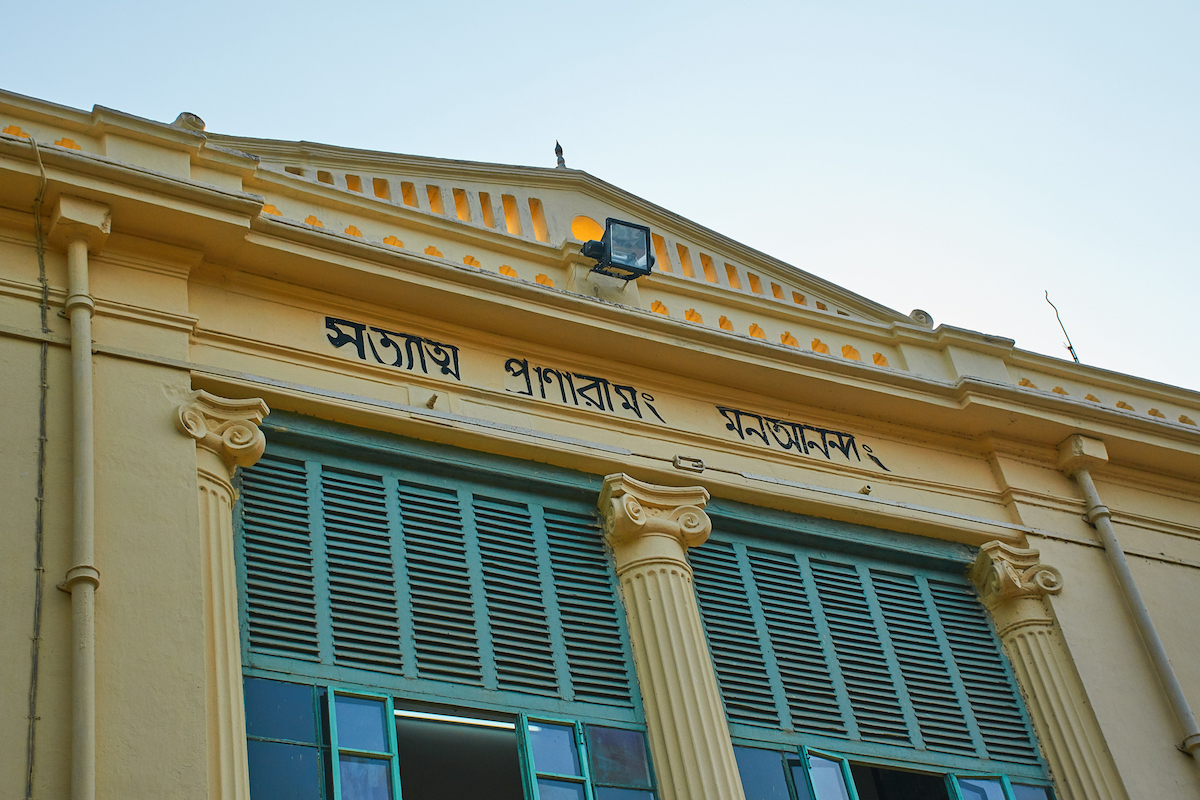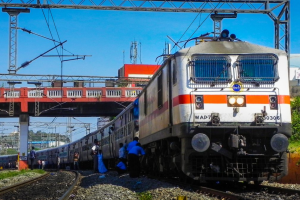Recently, Visva Bharati was on the boil on an issue that is unrelated to what is intrinsically a wall of discord between two rival political parties of West Bengal when behind the lush, green landscape of Santiniketan lurked some rowdy forces that went on a rampage inside the Visva Bharati campus. The mob directed its ire at the construction site of a boundary wall that was sought to be erected around the venue of the traditional Pous Mela. Even the old gates of the university were bulldozed to the ground.
Even a hard- core optimist would be left to wonder whether anything is still left of Rabindranath Tagore’s ” Abode of Peace” to fall back upon. The mess suggests that the institution badly needs to be rescued from politicians and henchmen pretending to respect Tagore. The pressures exerted by a consumerist society and politicisation of the academic spirit have left Gurudev’ s ideals in shambles.
Advertisement
At the heart of the rampage in Visva- Bharati was the long -standing tension prevailing between the local business community and the University. Unable to cope with public health problems arising out of Pous Mela , the University decided not to hold it, but the Centre’ s logistic support for it could not stop the tension which led to an untoward incident. Moreover, the proposed wall was also a direct consequence of a previous order of the National Green Tribunal that “a barrier needs to be constructed to demarcate the Mela ground from the University and locality”.
However, the question remains whether the erection of a wall around the complex was necessary. The site of the wall is integral to Santiniketan’ s landscape and is not far from the VC’ s official residence. Or this was symptomatic of the ideological walls that Tagore himself was aware of, that were silently cropping up in the institution of his creation. Nimai Sadhan Bose has maintained this in his book Bhagnanir Visva- Bharati (1991) thus: “He refers to these in 1934 but accepts them as part of the natural process. Tagore says, ‘When I am not there, whatever emerges from the combined thinking of many minds will be the natural truth. What will be artificial is if any one person imposes his ideas and directives. The praandharma is to embrace all contrarian views and forge ahead’.”
Sadly, Tagore’s dream of education nursed by the bounties of nature is now almost unrecognisable. The poet- humanist did not have to contend with student indiscipline, indifferent teachers and political interference. Santiniketan is, of late, submerged in all this and more and with promoters offering new horizons in real estate, the myth of rural Utopia has been badly shaken. Instead of being an institution of excellence, it is in the grip of mediocrity, indiscipline and vested interests.
When social and political tensions, violence and land grabbing by real estate agents have come to be accepted as part of Santiniketan’ s reality, it is pointless to expect the purity of Gurudev’ s ideas to prevail.
Sriniketan, too,held enormous talent in handicrafts and in time became a flourishing market for leather and textile products, but courses in textile technology, pottery and ceramics are not in sight. Many other basic features of the environment are rapidly disappearing under contemporary urban pressures without so much as a flicker of resistance. There is tacit acceptance of the fact that Tagore must yield to the transformation.
In fact, Visva- Bharati has limitations in dealing with those flaunting political credentials, especially trade unions who have succeeded in sullying Tagore’s objectives. There were also findings on how a former VC had offered liberal franchises to private unregistered institutions, to run different courses for a price.
Amartya Sen’ s remark, sometime ago, that the boundary wall around the campus is “enormously big” and is more comparable to ” Presidency jail than any other wall I can immediately think of” caused a flutter in the Visva-Bharati roost. The then VC, however, made a strained effort to defend the unsightly construction, even disputing Sen’ s view that “the wall went against what Tagore had envisioned”. The discord, therefore, centred over whether the university had yet again made a travesty of the poet’ s legacy. It was another affront to the salubrious ambience of Santiniketan that has already suffered on account of real estate activity.
Indeed, a series of travesties over the years, notably, the theft of the Nobel medal from Rabindra Bhavan and a murder in the girls’ hostel, could explain the decision to build a prison- like wall. With a wall in place, the university sought to able to depend on its guards. It might be a matter of subjective reflection whether the wall would run counter to Tagore’s vision.
Till the mid-1960s, there was no system of access control in the sprawling area of Santiniketan. Though the buildings were open to visitors at specified hours, the compound was open to all with a handful of security staff . Concern for security was felt after a bomb explosion in 1967-68, when Indira Gandhi as Chancellor was delivering her speech at the annual convocation. The abode of peace started to be drawn into the vortex of political turmoil.
It was during 1970-71 that Santiniketan saw its share of murders and arson and became asantiniketan. The convocation and the Pous Mela were postponed. Suggestions came that fences around the Rabindra Bhavan complex, the Kala Bhavan and Chatimtala areas be erected. However, it was the belief among some Ashramites that the proposal of access control by police was ruinous to Tagore’s ideals of Yatra Visvam Bhabatyeka Needam.
Armed guards alone might not create an ambience of security in Santiniketan. Irrespective of the result of the CBI in finding the stolen memorabilia of Tagore, what was needed was to safeguard the priceless works and artefacts that the poet and his illustrious ancestors bequeathed to VisvaBharati and the nation. Blatant commercialization of Tagore dealt a body blow to their ideals. Rare and unpublished manuscripts and art works have long been allowed to be taken out of Rabindra Bhavan and elsewhere to help publishing houses, authors and a section of VisvaBharati’ s academia reap immense financial benefits.
The killing of Saswati Pal has been a damnation for the institution far more terrible than the outrage at Rabindra Bhavan. Not less terrible was the incident of a girl being dragged to the men’ s hostel, there to be ragged and sexually assaulted .The university’ s predicament is direly pathetic.
The recent wall dispute shows that political currents and crosscurrents do vitiate the security ambience by not merely igniting clashes in the campus but sometimes compelling vice-chancellors to join one camp or the other.
In fact, the university in Santiniketan is different from any other in two ways. First, it was conceived by a man who was not an academic either by vocation or training, but who had the novel idea of learning contrary to the established academic values of his times. One does not know whether campus politics figured anyway in his conception of Visva-Bharati as a seat of learning. Secondly, Visva- Bharati has come to represent much more than a university founded by Tagore. It is, generally viewed as a symbol of Bengali culture by virtue of its official guardianship of Tagore’s heritage. Anything that undermines the prestige of the university is an offence done to that heritage and the culture which was fashioned out of it.
But the fact remains that a university today cannot remain an Ashram. It cannot maintain its spirit in a state of innocence or insulate itself from larger socio-political processes. It must face all resistances that jeopardize the integrity of its vision and fight for it, if required.
The writer, a former Associate Professor, Dept of English, Gurudas College, Kolkata, is presently with Rabindra Bharati University.










